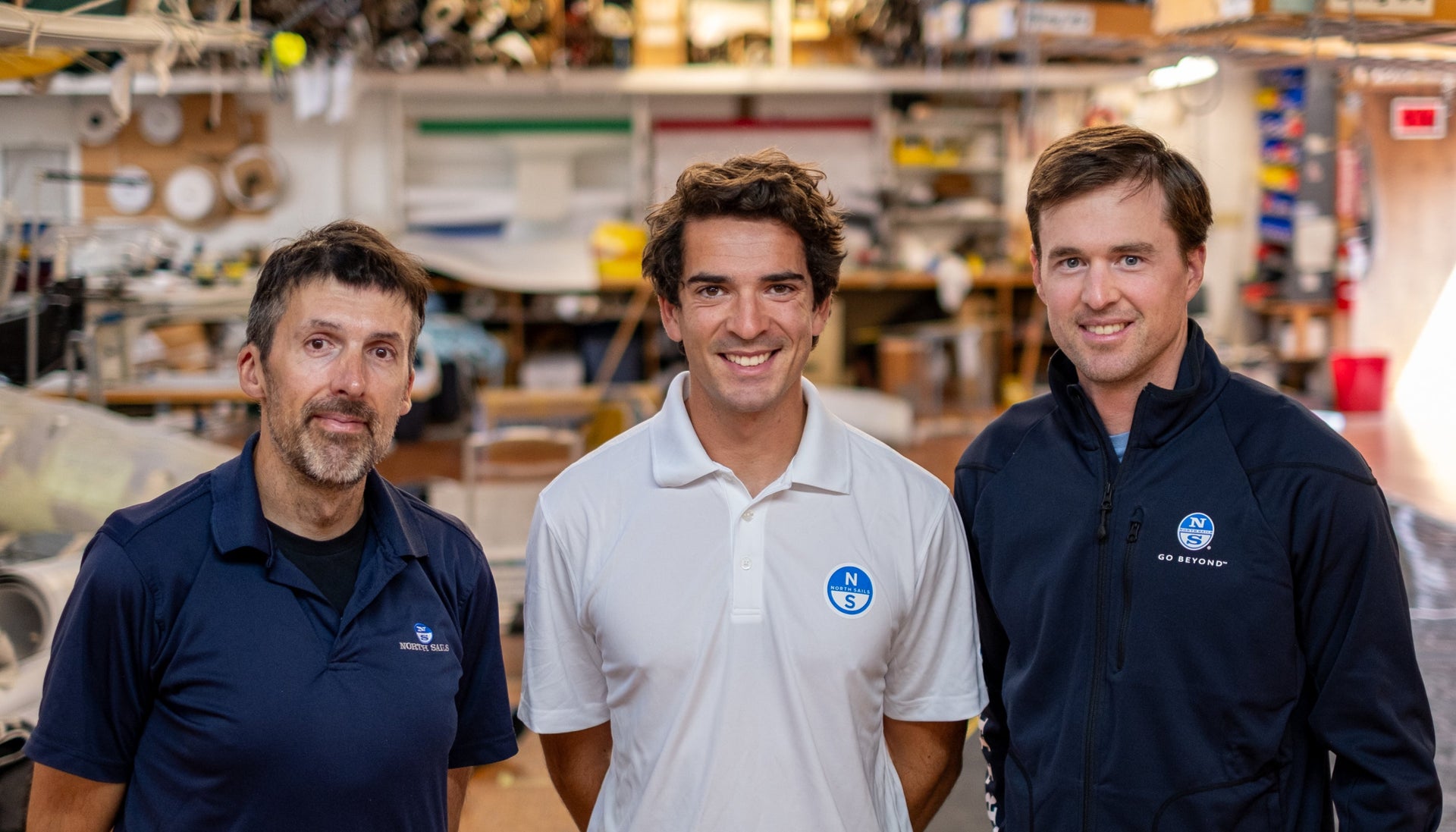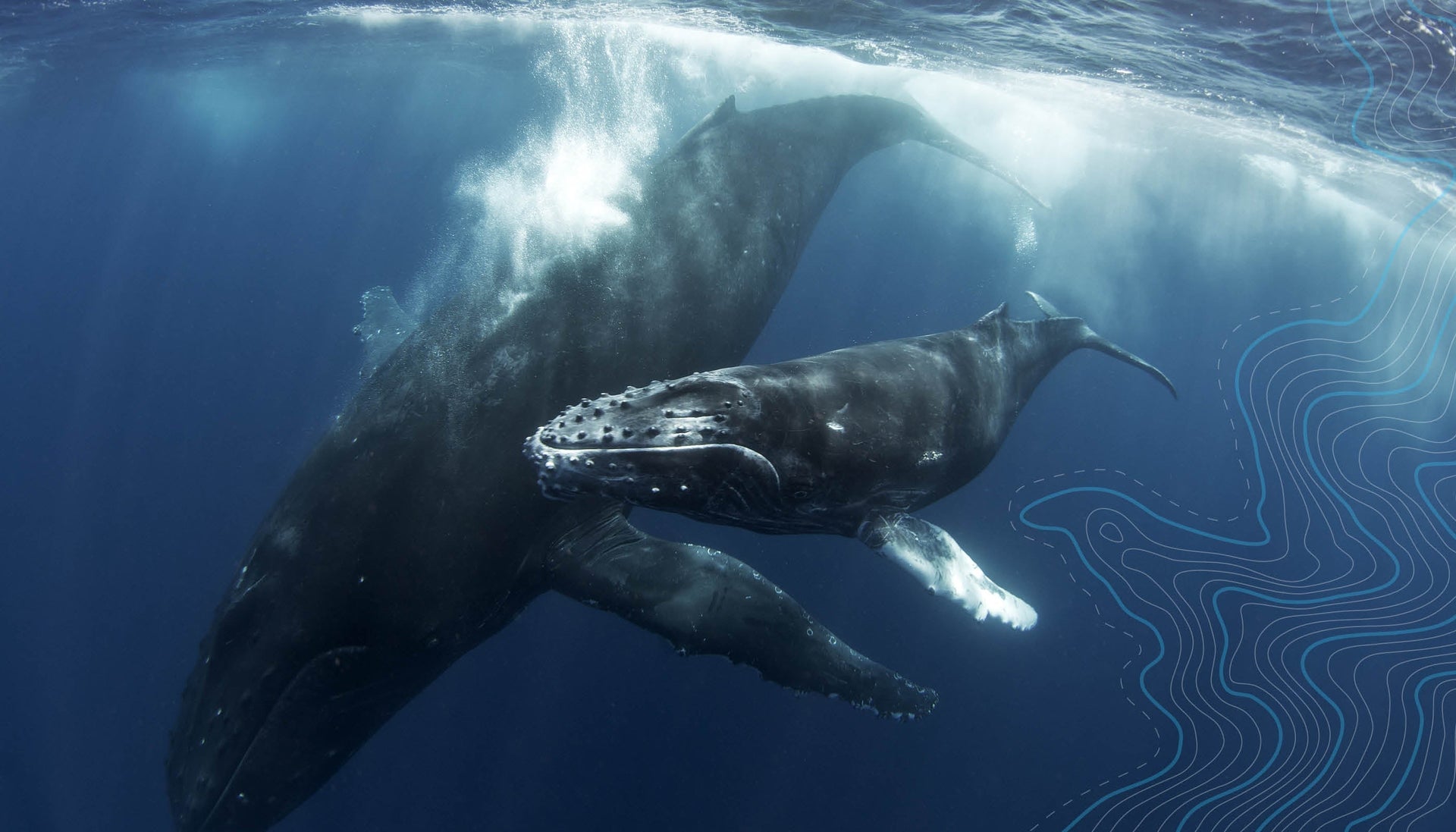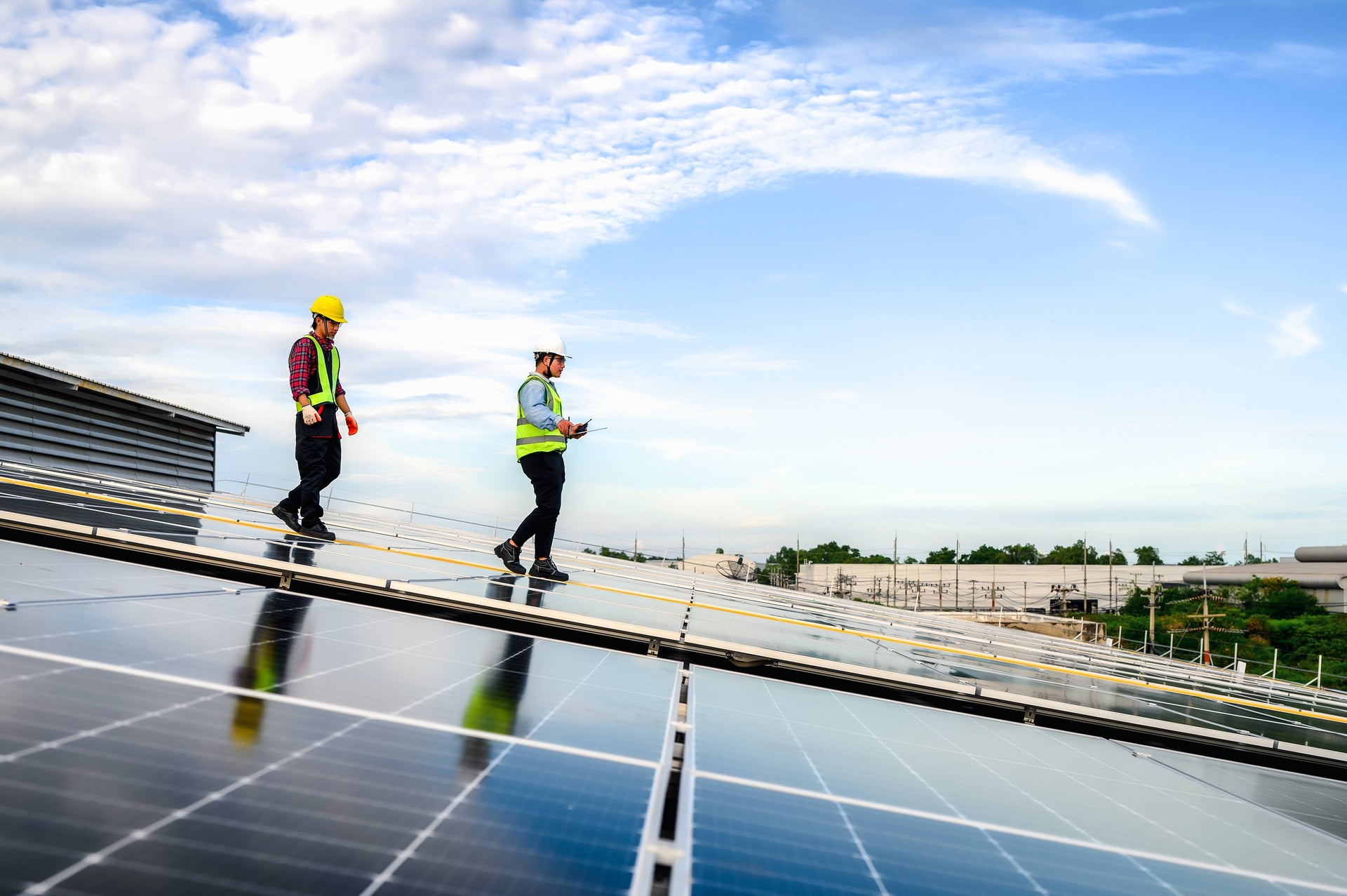WHAT IS RECYCLED ANYWAY?
Sustainability can mean a lot of different things. Introducing the North Sails Sustainability Glossary.
Sustainability can mean a lot of different things. The fast-evolving language and terms that aim to define it can lack clarity and meaning, and worse still, drift into greenwashing all too easily.
For North Sails, sustainability stands for our unwavering commitment to developing products across every part of our business that are sustainable to the limits of available technologies. It’s far from straightforward, and we don't take lightly the terms we use to describe, define and shape our efforts.
Our people and our customers either spend a lot of time on, in or around the ocean, or at the very least share our passion for this, the last great wilderness. At the same time, they’re acutely aware that this global ecosystem is under the constantly growing threat of pollution, climate change, and resource extraction.
This glossary helps us explain our sustainability benchmarks to our customers, our suppliers, and our people. It’s here to make sure we’re all speaking the same language as we work toward the aligned goals of a healthy marine environment, healthy communities, and a healthy economy.
OCEAN POSITIVE
Ocean Positive is the guiding principle steering all that we do, across all parts of our global business. The ocean is our life, our love, and indeed our livelihood. And while we’re the first to concede that sailmaking and fashion could always be more environmentally responsible (and we strive to make both much more so), we developed the Ocean Positive principle to show our unwavering commitment to the protection, preservation and regeneration of the ocean. It’s why, among many other things, we measure atmospheric carbon impacts throughout our business with an eye to reduce emissions at every point of our supply chains and manufacturing processes. At the same time, we partner with marine conservation and protection organizations whose global and local programs are positively affecting the health of the ocean.
RECYCLING
For North Sails, recycling means two things: finding new applications for retired sailcloth, and how we use waste products (like nylon, polyester, and cotton) left over from manufacturing processes. These materials find new life in apparel and gear across our Lifestyle clothing collections. By analyzing every potential recycling initiative, we’re sharply focused on how materials perform and their impact on net carbon reduction.
RECYCLED SAILCLOTH
The devil is in the detail: worn or damaged sails can through chemical processes be broken down into their constituent parts but reassembling them into new sails isn't practical from the standpoints of engineering, performance, environmental impact, and expense. The good news: the volume of sustainable material we use for our sails—like polyester filaments from recycled beverage bottles—has increased 90% over the past five years, and we actively promote the repurposing of old sailcloth into value-added products for our customers.

RECYCLED FABRICS & MATERIALS
Making clothes brings with it a deep ecological and social footprint. Whether it’s synthetics in our outerwear or natural fibers like cotton and wool, using recycled content is fundamental to reducing the environmental impact of North Sails Apparel. It’s why we prefer using recycled content that has been certified by the Global Recycled Standard, the international certification that sets requirements and standards for recycled materials, to reduce the social, environmental, and chemical impact across every stage of production. And it’s why we’re always looking for ways to take even more positive steps with a lighter footprint.
UPCYCLING
Upcycling is our opportunity to use materials that would have otherwise gone to waste—and use them to make products of a higher quality. A good example is using scraps from manufacturing processes or so-called ‘deadstock’ rolls, to make a jacket.
DOWNCYCLING
When sailcloth is too worn or damaged to be upcycled, we find ways to ‘downcycle’ it and produce less valuable—but still useful—products or feedstock materials. A well-worn sail might become a well-used pen, for example.
REUSE
Following the first big ‘R’ of ‘Recycling’ comes ‘Reuse’. Another guiding principle of our work, it’s the approach we take to business and community engagement that emphasizes minimal waste, recycling, the conservation of resources, and the stewardship of natural systems. Feedstock materials and retired products can—indeed, must—be reused at every opportunity to sustain both a viable economy and a healthy planet.
LOW IMPACT MANUFACTURING
Low impact manufacturing is our north star and guides everything we do. That said, we've also been in business long enough to know that dramatic breakthrough technologies are rare. Incremental improvements are more realistic and therefore, more attainable. So that's where we invest our time, assets, and energy: continually improving our supply chains and manufacturing at every step, to whatever degree possible. Our commitment never ends. The progress we've made so far is real and quantifiable—and like our commitment, won’t ever stop.
CARBON FOOTPRINT
From sourcing raw materials right through to how we ship products to our customers, we strive to reduce our carbon footprint at every stage and in all aspects of our business.
For sailmaking, this can mean incentivizing customers to opt for sea rather than air delivery, or deriving more than 90 percent of the polyester film used in our sails from recycled PET (plastic beverage) bottles. In apparel, it translates as sourcing more than 90% of our synthetic fibers from recycled content.
Our commitment also means acknowledging the limitations of current technology. Carbon fiber, for example, is a foundational component of high-performance sails, but recycling and reusing it can be problematic. While we can't make wholly ‘green’ Grand Prix sails, we can—and do—constantly strive to make them ‘greener’. Our achievements in carbon reduction are necessarily incremental, but they are real and ongoing. And over time, they are significant.

DEAD SAIL
A sail that has reached the end of its useful sailing life. At this point, it’s eligible for alternative uses, including the creation of value-added products like bags and apparel.
SUSTAINABILITY
As defined by the Brundtland Report, sustainable development '…is development that meets the needs of the present without compromising the ability of future generations to meet their own needs’.
North Sails wholly supports this interpretation—and our commitment extends beyond the production of low-carbon emission sails. Our goal is steady, validated progress in reducing negative environmental and social impacts in every part of our business. Minimizing carbon outputs—in supply chains, sail and apparel manufacturing, and transport—are part of it. But so are iron-clad commitments to both staff and community. Without living wages and adequate benefits for employees, and without clean, safe, and functional communities, companies cannot attain—or even aspire to—true sustainability.
IMOCA GREEN SAIL RULE
Launching in 2021, the Green Sail Rule is designed to mitigate carbon emission ‘hotspots’ in the production of sails for the IMOCA Class—and ultimately, to foster a carbon reduction ‘culture’ throughout the sailmaking industry. To achieve compliance with the Green Sail Rule, sailmakers must prove waste reduction in manufacturing and marketing, derive 25% of all business-associated energy from renewable resources, and choose the most sustainable mode of product transport possible.
North Sails complies with both the letter and the spirit of the Green Sail Rule. We provide complete transparency to IMOCA, and we endeavor to meet all three milestones: sustainable materials and manufacturing processes, renewable energy, and transport.
We also believe service life is an integral, fundamental element of sustainability. North Sails is famed for the durability of our products. It’s down to the quality of our materials and our manufacturing processes—but also to our lofts, which are distributed globally. We can restore optimal sail geometries to enhance performance and extend longevity, further reducing our carbon outputs by avoiding the need to make new sails. For North Sails, customer service isn't just about guaranteeing customer satisfaction; it's also about creating a comprehensive and far-reaching sail strategy that’s more planet-conscious all round.

PFC FREE
Perfluorochemicals are a family of chemicals used to make fabric coatings that are highly resistant to water, heat, oil, grease, and UV light. When applied in the form of protective covers, these materials extend sail life dramatically and have become a mainstay component of the modern sail industry. Their use, however, also entails a significant downside. PFCs are exceedingly stable and long-lived compounds, and they accumulate in both the environment and living tissue. They are generally considered toxic by the scientific community, and companies that manufacture them have begun phasing out their production.
After lengthy discussions with our suppliers, North Sails has identified compounds that offer protection comparable to PFCs without the ‘forever chemical’ impacts. We anticipate incorporating these alternative materials in our sail production soon. Will the new sails demonstrate the same resistance to stains and degradation as those employing PFCs? Candidly, no. But their resistance envelopes will be very close, and their performance at sea will not be compromised. We are also working on similar PFC-free solutions for our high-performance apparel.
BLUE CARBON
Carbon fiber is an essential feedstock in the manufacturing of modern high-performance sails. But carbon fiber also takes a great deal of heat to create. Producing carbon fiber, in other words, is not a low carbon process. And given its bedrock importance to high-performance sails, its continued use is inevitable—at least for the foreseeable future.
We are constantly evaluating new materials that could reduce our carbon footprint, and carbon fiber is not exempt. At this point, no viable alternative exists, but our investigations are ongoing. Carbon fiber can be ‘blue’ if it’s extracted from old sails and reused. Unfortunately, it can't be reclaimed in the long fibers that are necessary for new sails. But it can be extracted as short, chopped fibers that can be used as is or milled (powdered) to produce a wide variety of other products.
LIFE CYCLE ANALYSIS
We are applying a ‘life cycle analysis’ (LCA) to ten of our signature sailing products. That means we are investigating all the materials and impacts required to produce them, specifically the amount of energy and carbon output resulting from material sourcing, transportation, and product manufacturing.
We’re applying the same LCAs to our top-selling apparel. By understanding the full environmental implications of our apparel we can identify meaningful ways to reduce negative effects. Among other priorities, that means working with suppliers who use renewable electricity instead of power from fossil fuel plants, and changing high-impact materials for materials with proven lower impacts.
Establishing verified carbon footprints for each of these products means we’re able to put together a comprehensive database that allows us to anticipate the outcome of any ‘tweak’ to sourcing or manufacturing. Business and environmental realities, we've found, may or may not pique interest from the media or our customers. A concept that sounds groundbreaking may turn out to have little or no impact, while a seemingly small change in materials procurement could have a positive and dramatic effect. By compiling hard data on the real-world impacts of production, we'll be able to confirm what works—and perhaps more importantly, what doesn't.

UNITED NATION'S SUSTAINABLE DEVELOPMENT GOALS
Established in 2015, the UN's Sustainable Development Goals consist of 17 linked objectives that constitute a ‘…shared blueprint for peace and prosperity for people and the planet, now and into the future’.
North Sails, of course, supports the UN's SDGs—including those that speak directly to our work: Goal 7 (affordable and clean energy), Goal 9 (innovative and sustainable industry and infrastructure), Goal 11 (sustainable cities and communities), Goal 12 (responsible consumption and production), Goal 13 (climate action), and Goal 14 (sustainable use of the oceans and marine resources). The challenge—which we unequivocally and unanimously accept—is to develop the mechanisms and internal procedures needed to meet these laudable goals.
RENEWABLE ENERGY
Renewable energy is power from sources that are sustainable; unlike fossil fuels, they don’t use finite resources. Solar and wind are the current leading options for renewable energy, but other sources include hydropower, geothermal power, biofuels, and hydrogen.
Given the accelerating impacts of climate change, a global shift to sustainable energy is paramount. But this goal can only be achieved through effective regional strategies. Different countries have different energy regulations and grid structures; a ‘sustainable’ source in one nation may have a relatively high impact in another.
North Sails has sail manufacturing plants in Minden, Nevada USA, Colombo Sri Lanka, Bridgeport, Connecticut USA, Gosport, UK, and more. We also maintain more than 100 repair lofts worldwide. Our North Sails Apparel offices and stores in Italy are powered with 100% renewable electricity. Energy sourcing, consumption, and impacts vary widely among our facilities, and we are creating energy roadmaps for each of them. The goal: at least 80% renewable energy for all company activities by 2030.







